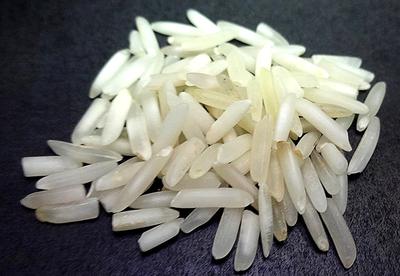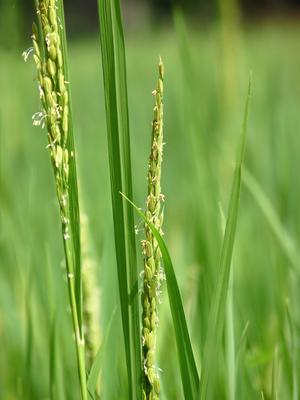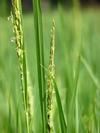VANILLA BEANS | SOYBEAN OIL | SOYMEAL & CAKE | COCOA BEANS | COFFEE BEANS
How to grow RICE in Uganda

Rice grains in Uganda
Rice is one cereal crop that has become popular in Uganda over the past years. ”omuchele” as locally known is also one of the world’s most important cereal.
Rice is the seed of the grass species Oryza sativa (Asian rice) or Oryza glaberrima (African rice).
As a cereal grain, it is the most widely consumed staple food for a large part of the world's human population, especially in Asia.
It is the agricultural commodity with the third-highest worldwide production (rice, 741.5 million tonnes in 2014), after sugarcane (1.9 billion tonnes) and maize (1.0 billion tonnes)
Rice has been gathered, consumed, and cultivated by women and men worldwide for more than 10,000 years (Kenmore, 2003), longer than any other crop.
The total area under rice cultivation is globally estimated to be over 150,000,000 ha. Rice represents 29 % of the total output of grain crops worldwide. (Xu et al., 2003)
Rice production in Uganda started in 1942 mainly to feed the World War II soldiers, however due to a number of constraints, production remained minimal until 1974 when farmers appealed to the then government for assistance. In response, government identified the Doho swamps and constructed the Doho Rice Irrigation Scheme (DRS) with the help of Chinese experts.
Today rice is grown mainly by small scale farmers almost throughout the country, but also with large scale farmers in few places. Total production is estimated at over 165,000 metric tons.
Most rice in Uganda is grown in Eastern Uganda followed by Western Uganda due to the presence of lowland with high moisture content throughout the growing season.
Common rice varieties in Uganda
There are two main rice varieties grown in Uganda today and they include:
Up land rice - this type of rice is grown on land and does not require swampy areas e.g. NERICA 1, 4, and 10.
Lowland rice - this is the oldest type of rice grown, and it requires water soaked places for its production. Also known as paddy rice it has the following types grown i.e. K6 and K85.
Soil requirements for growing rice in Africa
Rice is best grown on fertile, clay loam soils for lowland rice, and clay loamy soils for upland rice.
How to propagate rice on your farm
All rice varieties are best started using seeds.
To gain profitably one should use viable seed without insect damage or contaminants.
Contact us here to buy rice for food in bulk and rice seeds in Uganda
How to plant rice in Uganda
Prepare the field early by removing barriers and level the ground as this helps in giving better water coverage and establishment of the crop.
Before planting select the seeds to use by sun drying them for 1 or 2 days to break dormancy and then also adding water to the seeds to help discard all empty grains that float in water.
There four basic methods for growing rice and these include
For transplanted crops:
Select a nursery site that is 1/10 in size of the intended planting area.
Prepare the nursery by plowing at least twice and harrow at least once.
Level the soil surface and put in drainage lines across the field.
Pre-germination and sowing - soak the seed for 24 hours and then drain for 24 hours in the shade. Broadcast seed in the nursery evenly, over the water covered soil surface.
Apply seed: 30–40 kg seed/ha transplanted area.
Apply both chemical and organic fertilizer in the field before the last plowing.
Transplanting age: short-medium duration varieties need 20-30 days and long-duration varieties need 20-40 days in nursery after seeding
Transplant in lines into puddle and water-covered fields
Maintain water coverage in field
Contact us here to buy rice for food in bulk and rice seeds in Uganda
For direct seeding:
Prepare the field by plowing at least twice and harrowing once-compare seed size and clod size.
Level the soil surface.
Apply and incorporate basal fertilizer before the last plowing or at 10 days after establishment.
Wet direct seeding:
Pre-germination of seed - soak the seed for 24 hours and then drain for 24 hours in the shade before broadcasting evenly over the water-covered soil surface.
Broadcast pre-germinated seed at 100 kg/ha
Allow surface water to drain or percolate naturally into soil
Keep soil surface moist by adding water.
Add permanent water at 10–15 days after establishment or at 2–3 leaf stage.
Apply basal fertilizer after permanent water is added.
Contact us here to buy rice for food in bulk and rice seeds in Uganda
Dry direct seeding
Hand broadcast dry seed at 100 Kg/ha or machine drill seed at 80 Kg/ha and 20 mm depth
Apply basal fertilizer through the seed drill.
Cover broadcast seed and fertilizer with a light harrowing
Flash flood until 15 days after emergence or 2-leaf stage then add permanent water
Fertilize the growing plants with NPK to boost the residual nutrients in the soil
Contact us here to buy rice for food in bulk and rice seeds in Uganda
How best to harvest rice in Uganda
Rice is ready for harvesting when the grains are hard and turning yellow or brown.
This is about 30 to 45 days after flowering or a month after flowering.
Cut the stems with a sickle about 10-15cm above the ground.
Lay harvested rice crop in upright position for drying before threshing can be done manually by beating rice against the floor or a stick to release the seeds.
Winnow to separate the husks from well matured grains.
Sundry the rice 2-3 days before milling to reduce breakage during mill
Mill the grains to produce clean white rice, then pack and store for market.
Contact us here to buy rice for food in bulk and rice seeds in Uganda
About the Market for Rice in Uganda
Total rice consumption is estimated at over 225,000 metric tons annually.
Rice grown in Uganda has a ready market in retail shops and there is growing export market to neighboring countries like Congo and South Sudan.
Quick Tips for Planting Rice in Africa
- Clear up the field meant for planting as early as possible.
- Level the soil surface to put in drainage channels.
- Apply chemical fertilizers before the last ploughing.
- Prior to planting pre- germinate the seeds by soaking them in water and then drain.
- Broadcast the seeds on the water surface in the field evenly.
- Keep soil moist by adding water.
- When the seedlings have attained 2-3 leaves you can add permanent water.
- Harvest when the rice is due.
Contact us here to buy rice for food in bulk and rice seeds in Uganda
Join in and write your own page! It's easy to do. How? Simply click here to return to Plants Guide.
If you haven't yet found what you were looking for or you need detailed information about the subject matter on this page then... feel free to ask our business travel consultants. |







